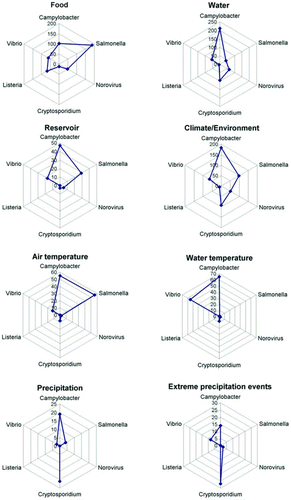Figures & data
FIGURE 1 Semantic network maps of thematic attributes for Cryptosporidium sp. and Listeria sp. Climate change knowledgebase for food- and water-borne diseases, 1998–2009. Note: Maps to be read clockwise: thematic aspects are arranged concentrically and colour coded (food = yellow; water = blue; pathogens = pink; climate/environment = green). Cryptosporidium and Listeria pathogens on the bottom left of the circle are coloured blue and initiate connections with other terms, represented with red stings linking to red terms. Gray strings in the background represent the network of all connections not activated in this view. The list of 275 terms in the ontology has been reduced for this map to app. 140 terms due to space restrictions. The 4th level of the hierarchy was deleted for this map but the link was retained by moving it to its ancestor items at the third level
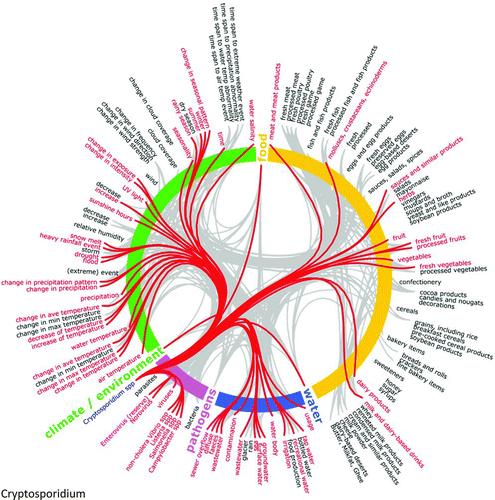
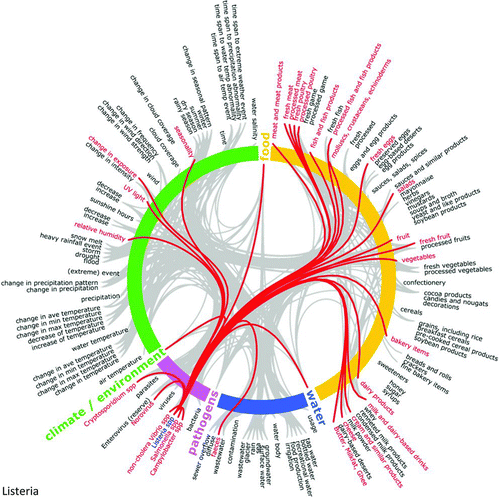
FIGURE 2 Annual notifications of campylobacteriosis, cryptosporidiosis, listeriosis, and salmonellosis in the EU and EEA/EFTA countries from 1995 to 2007. These data reflect incomplete reporting by member states. The 2007 data for campylobacteriosis were reported from 25 EU member states, plus Iceland, Lichtenstein, and Norway (Greece and Portugal did not report). Salmonellosis was reported by all EU countries plus Iceland, Liechtenstein and Norway. Cryptosporidiosis notifications are based on 10 of the 19 countries providing data (9 countries reported zero cases). Listeriosis was reported by 29 countries, with the exception of Portugal. Please note the different scales on the y axes in Figure 4B (Color figure available online).
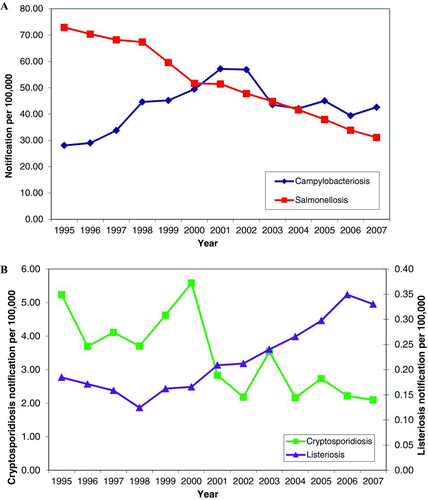
FIGURE 3 Seasonal distribution of campylobacteriosis, cryptosporidiosis, listeriosis, and salmonellosis in the EU and EEA/EFTA countries, in 2007. Source: Country reports. Campylobacteriosis: Austria, Belgium, Cyprus, Czech Republic, Denmark, Estonia, Finland, France, Germany, Hungary, Ireland, Italy, Luxembourg, Malta, Netherlands, Poland, Slovakia, Slovenia, Spain, Sweden, United Kingdom, Iceland, and Norway. Latvia reported zero cases. Cryptosporidiosis: Belgium, Bulgaria, Finland, Germany, Ireland, Luxembourg, Malta, Slovenia, Spain, Sweden, United Kingdom. Cyprus, Czech Republic, Estonia, Finland, Hungary, Latvia, Lithuania, Poland, and Slovakia reported zero cases. Listeriosis: Austria, Belgium, Bulgaria, Cyprus, Denmark, Finland, France, Germany, Greece, Hungary, Ireland, Italy, Latvia, Luxembourg, Netherlands, Poland, Slovakia, Slovenia, Spain, Sweden, United Kingdom, and Norway. Malta and Iceland reported zero cases. Salmonellosis: Austria, Bulgaria, Cyprus, Czech Republic, Denmark, Estonia, Finland, Germany, Greece, Hungary, Ireland, Italy, Latvia, Luxembourg, Netherlands, Portugal, Romania, Slovakia, Slovenia, Spain, Sweden, United Kingdom, Iceland, and Norway
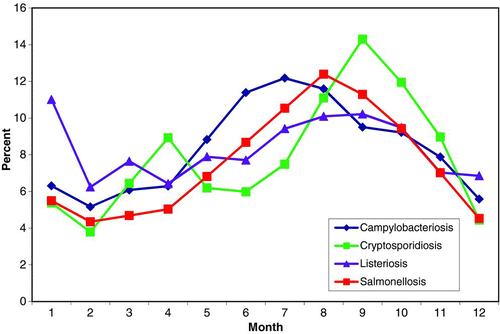
FIGURE 4 Radar diagram of thematic aspects for food, water, climate/environment, reservoir, air temperature, water temperature, precipitation, and heavy rainfall event, by pathogen from the climate change knowledgebase for food- and waterborne diseases, 1998–2009. Axes (spokes) with different scales. A radar diagram is a graphical method of plotting multivariate data on a two-dimensional chart, on multiple axes originating from the same pole
